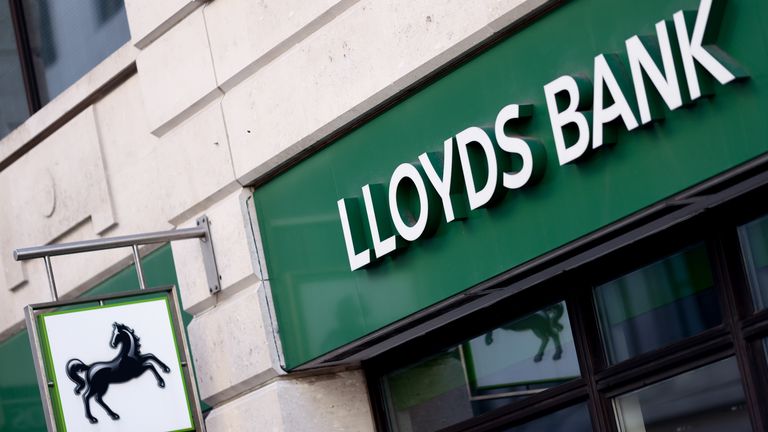The banking sector is “investing heavily” in digital platforms, according to the body which represents the country’s lenders as many face a backlash over the latest payday glitch chaos to hit customers.
Millions were exposed on Friday to varying challenges from slow app or online banking performance to being blocked out of their accounts altogether.
Users said the brands caught up in the issues – which did not appear to be the result of a single problem – included Lloyds, Halifax, Nationwide, TSB, Bank of Scotland and First Direct.
Money latest: How is my bank affected by banking glitch?
It marked the second month in a row for payday problems and no reasons have been given for them.
The industry has been historically reluctant to talk about the common challenges but its mouthpiece, UK Finance, told Sky News there was help available and protections in place during times of disruption while acknowledging customer frustrations.
The body spoke up as MPs and regulators take a greater interest in the resilience issue due to mounting concerns over the number of glitches.
All this comes at a time when major lenders face criticism for continuing to cut branch services at a regular pace – blaming ever higher demand for online services.
The UK’s big banking brands have been shutting branches since the fallout from the financial crisis in 2008, which sparked a rush to cut costs.
The uptake of digital banking services has seen more than 6,200 sites go to the wall since 2015, according to the consumer group Which?
The latest closures were revealed last month by Lloyds – Britain’s biggest mortgage lender.
Its announcements meant that it planned, across the group, to have just 386 Lloyds-branded branches left, with Halifax down to 281.
Bank of Scotland would have just 90 once the closure programme was completed.
Critics have long accused the industry of failing to sufficiently invest their branch closure savings in better online services.
But a UK Finance spokesperson said: “All banks invest heavily in their systems and technology to ensure customers have easy access to banking services.
“Where issues arise, they work extremely hard to rectify them quickly and to support their customers.
“Banks have been posting information on their websites and social media accounts to ensure they keep customers updated.”
Are banks doing enough?
Earlier this month, The Treasury committee of MPs wrote to bank bosses to request information on the scale and impact of IT failures over the past two years.
Their responses should have been received by Wednesday.
The letters followed an outage at Barclays which led to some customers being unable to access some services for up to three days from Friday 31 January.
The day marked HMRC’s self-assessment deadline alongside pay day.
The Bank of England has also been taking a greater interest in the issue for financial stability reasons.
The MPs sought data from the banks on the volumes of customers affected by glitches – and the compensation that had been offered.
Committee chair, Dame Meg Hillier, said then: “When a bank’s IT system goes down, it can be a real problem for our constituents who were relying on accessing certain services so they can buy food or pay bills.
“For it to happen at a major bank such as Barclays at such a crucial time of year is either bad luck or bad planning. Either way, it’s important to learn what has happened and what will be done about it.
“The rapidly declining number of high street bank branches makes the impact of IT outages even more painful; that’s why I’ve decided to write to some of our biggest banks and building societies.”


